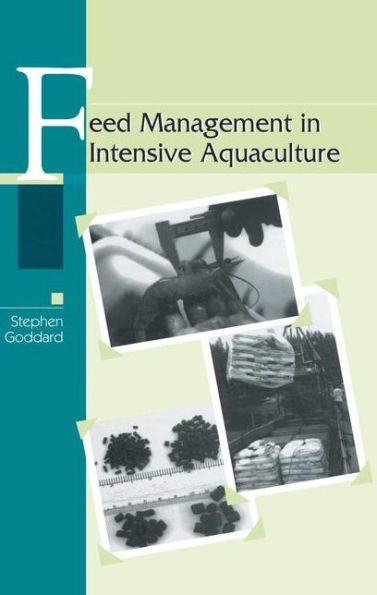Feed Management in Intensive Aquaculture
" This book has been written as a guide to the management and use of formulated feeds in intensive fish and shrimp culture. While its focus is on the use of commercially pro duced feeds in intensive production systems, it is anticipated that many of the practical issues covered will be of equal interest to those fish farmers who make their own feeds and to those who use formulated feeds in less intensive systems. Feeds and feeding are the major variable operating costs in intensive aquaculture and the book is primarily in tended to aid decision making by fish farm managers in areas of feeding policy. The dramatic increases in aquaculture production seen over the past 15 years have been made possible, in large part, by gains in our understanding of the food and feed ing requirements of key fish and shrimp species. A global aquaculture feeds industry has developed and a wide range of specialist feeds is now sold. The new options in feeds and feeding systems, which are becoming available, necessitate continual review by farmers of their feeding policies, where choices must be made as to appropriate feed types and feeding methods. While growth rates and feed conversion values are the prime factors of interest to farmers, other important issues, such as product quality and environmental impacts of farm effiuents, are also directly related to feed management practices.
1120066664
Feed Management in Intensive Aquaculture
" This book has been written as a guide to the management and use of formulated feeds in intensive fish and shrimp culture. While its focus is on the use of commercially pro duced feeds in intensive production systems, it is anticipated that many of the practical issues covered will be of equal interest to those fish farmers who make their own feeds and to those who use formulated feeds in less intensive systems. Feeds and feeding are the major variable operating costs in intensive aquaculture and the book is primarily in tended to aid decision making by fish farm managers in areas of feeding policy. The dramatic increases in aquaculture production seen over the past 15 years have been made possible, in large part, by gains in our understanding of the food and feed ing requirements of key fish and shrimp species. A global aquaculture feeds industry has developed and a wide range of specialist feeds is now sold. The new options in feeds and feeding systems, which are becoming available, necessitate continual review by farmers of their feeding policies, where choices must be made as to appropriate feed types and feeding methods. While growth rates and feed conversion values are the prime factors of interest to farmers, other important issues, such as product quality and environmental impacts of farm effiuents, are also directly related to feed management practices.
169.99
In Stock
5
1

Feed Management in Intensive Aquaculture
194
Feed Management in Intensive Aquaculture
194
169.99
In Stock

Product Details
| ISBN-13: | 9780412070815 |
|---|---|
| Publisher: | Springer US |
| Publication date: | 12/31/1995 |
| Edition description: | 1996 |
| Pages: | 194 |
| Product dimensions: | 6.14(w) x 9.21(h) x 0.02(d) |
| Age Range: | 18 Years |
From the B&N Reads Blog
